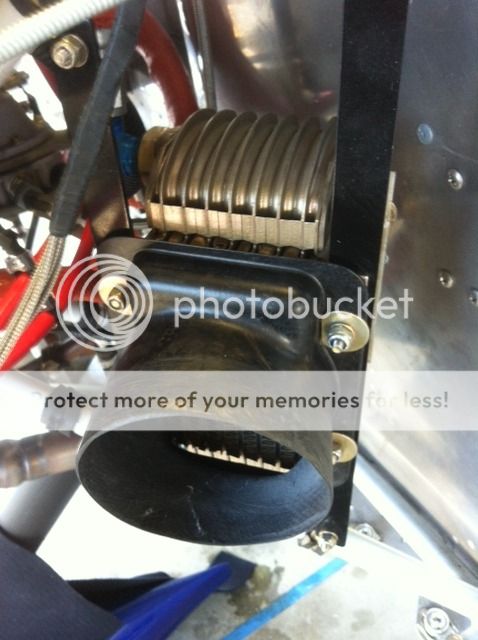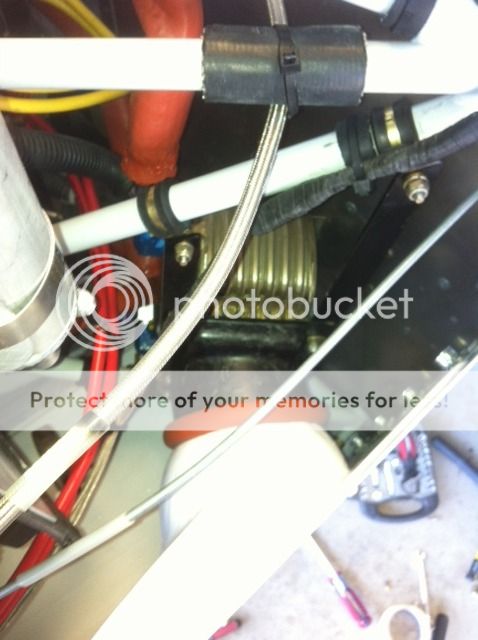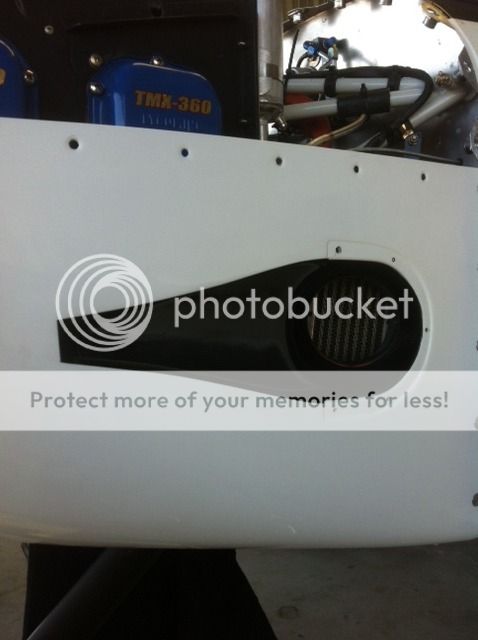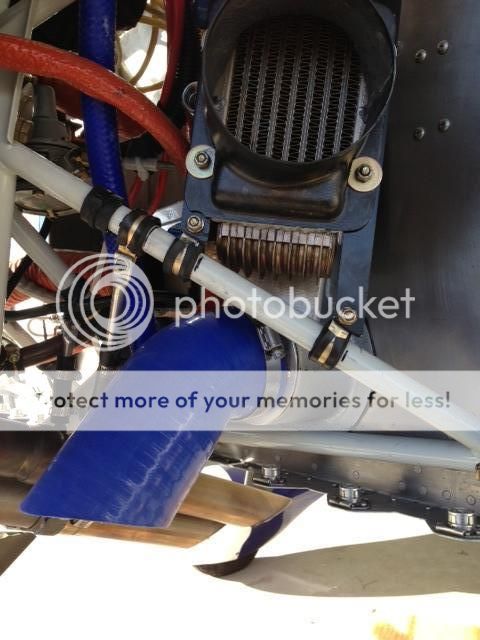Cfrisella
Well Known Member
I thought I'd share my experiences encounter while going through the process of relocating my oil cooler. Hopefully this will be usefull to others either thinking of doing it, or for those who actually need to.
Some basic information first. I completed my 7A in November of 2011. It has an XIO-360 set up with Van's standard 7 row oil cooler. At the time of completion the cooler was mounted in the stardard location behind number 4. My cyclinder temps have always been fine and the original oil temps were about 185. One thing to take into consideration is that early flights were done in the California winter, so temps were probably around 55 or so. In May of 2012 I decided to move my oil cooler to the left side of the lower cowl to test a 4 inch NACA scoop. Here's some pics of the install.



The incoming air flow originally just dumped into the engine compartment. When I tested this setup it was now summer time and OATs were probably around 75 to 85. Cyclinder temps continued to remain fine. A little higher I think, but my oil temps would slowly climb to the 220s when ran WOT for say 5 minutes. Being that it was now summer, with higher temps, I wasn't too sure if the higher oil temps were due to that, or if the intake air was restricted because it dumped into the engine compartment. This could be the cause of slightly higher cycinder temps as well. Too much air in, not enough getting out.
So I then decide to try and channel the oil cooler exhaust in a way that would isolate it from the engine compartment. I also wanted to perform the first tests under the same winter temps in hope of achieving my original oil temps around 180.
Here's what I came up with. I made a fiberglass duct that would seal around the exit side of the oil cooler and the fire wall forming air path down to the lower cowl. From there, a 3 inch silicone hose with a 45 degree bend would channel the exit flow into an airbox and finally out through a lower cowl vent.

Sorry it's not rotated.
One thing I want to add. Right before starting the rechanneling mods in December I flew it WOT in cold temps and the oil temps still slowly climbed to the 220s.
This morning I made the first test flight with all cooler exhaust air exiting a lower cowl vent. OAT was about 53F and oil temps never saw anything above 180 and I was pushing it. For the moment things look really good but I'll keep you posted as more time is flown off.
Some basic information first. I completed my 7A in November of 2011. It has an XIO-360 set up with Van's standard 7 row oil cooler. At the time of completion the cooler was mounted in the stardard location behind number 4. My cyclinder temps have always been fine and the original oil temps were about 185. One thing to take into consideration is that early flights were done in the California winter, so temps were probably around 55 or so. In May of 2012 I decided to move my oil cooler to the left side of the lower cowl to test a 4 inch NACA scoop. Here's some pics of the install.



The incoming air flow originally just dumped into the engine compartment. When I tested this setup it was now summer time and OATs were probably around 75 to 85. Cyclinder temps continued to remain fine. A little higher I think, but my oil temps would slowly climb to the 220s when ran WOT for say 5 minutes. Being that it was now summer, with higher temps, I wasn't too sure if the higher oil temps were due to that, or if the intake air was restricted because it dumped into the engine compartment. This could be the cause of slightly higher cycinder temps as well. Too much air in, not enough getting out.
So I then decide to try and channel the oil cooler exhaust in a way that would isolate it from the engine compartment. I also wanted to perform the first tests under the same winter temps in hope of achieving my original oil temps around 180.
Here's what I came up with. I made a fiberglass duct that would seal around the exit side of the oil cooler and the fire wall forming air path down to the lower cowl. From there, a 3 inch silicone hose with a 45 degree bend would channel the exit flow into an airbox and finally out through a lower cowl vent.

Sorry it's not rotated.
One thing I want to add. Right before starting the rechanneling mods in December I flew it WOT in cold temps and the oil temps still slowly climbed to the 220s.
This morning I made the first test flight with all cooler exhaust air exiting a lower cowl vent. OAT was about 53F and oil temps never saw anything above 180 and I was pushing it. For the moment things look really good but I'll keep you posted as more time is flown off.





